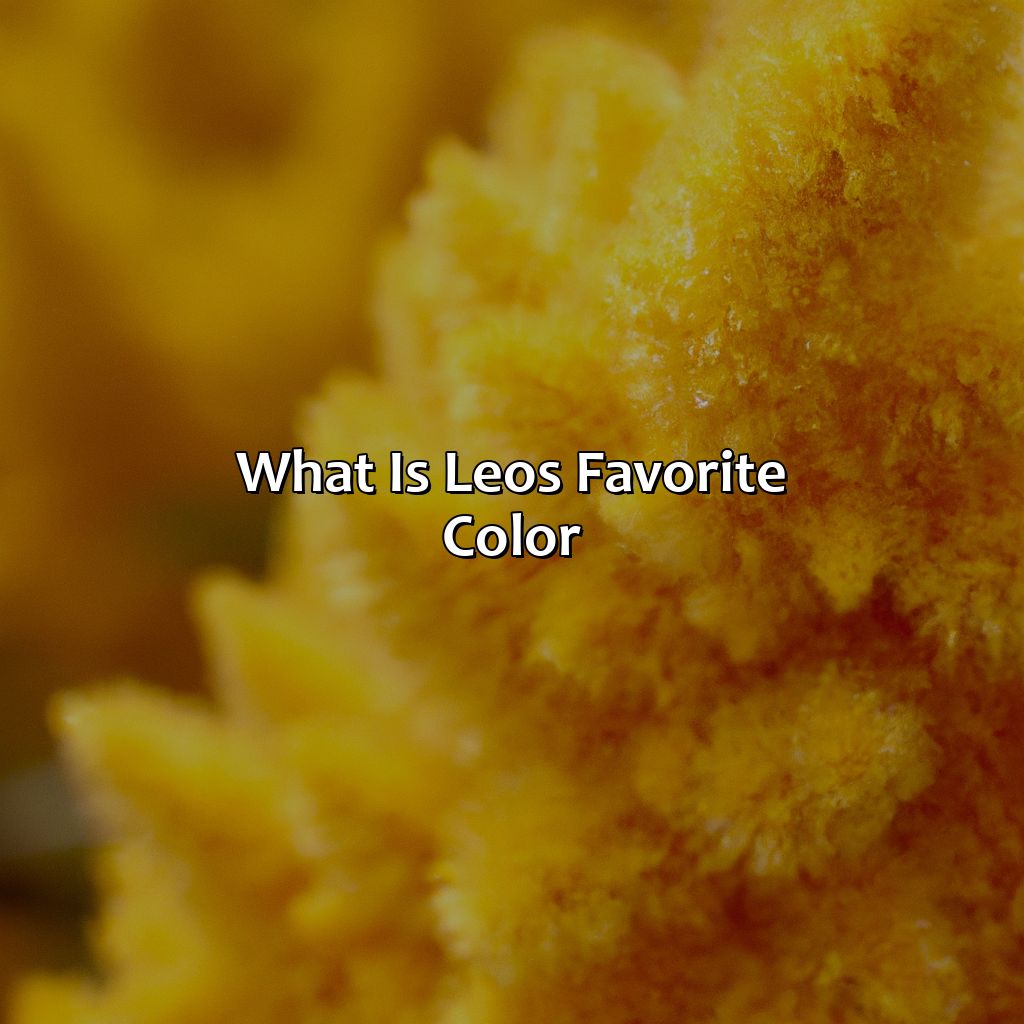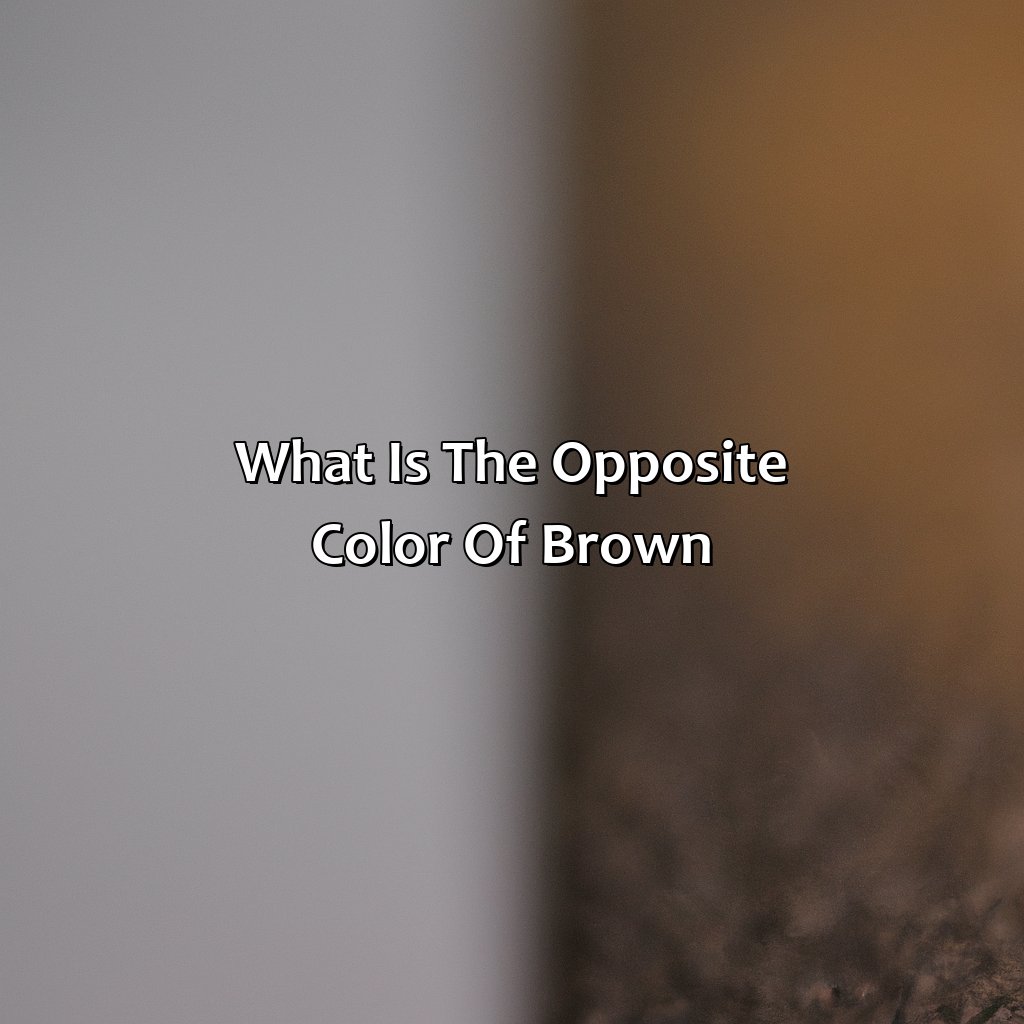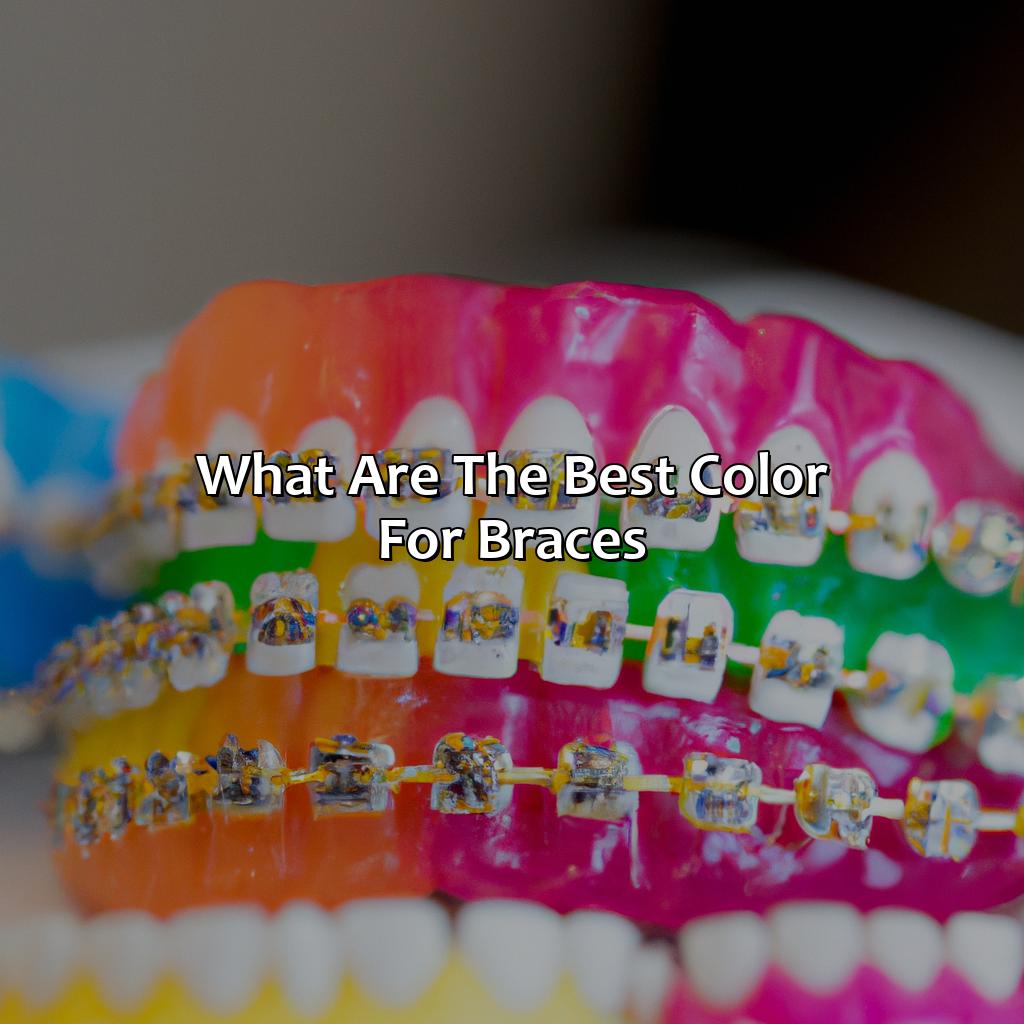Key Takeaway:
- Opaque color can be defined as a type of paint or pigment that provides high coverage and is non-translucent, resulting in bold, rich, and vibrant hues.
- Opaque colors have high coverage and hide, making them ideal for creating solid, flat color areas.
- Opaque colors are non-translucent, meaning they do not allow light to pass through them. This results in strong, bold colors that are perfect for creating an impactful design.
- There are various types of opaque colors available, including opaque watercolors, acrylic opaque paints, and opaque oil paints.
- Opaque colors have a wide range of applications across various industries, from art and design to industrial applications and cosmetic and personal care products.
- When using opaque colors, techniques like layering, dry brushing, and blocking and masking can be used to achieve different effects.
- Opaque colors are highly versatile and important in various industries and applications, and offer a wide range of creative possibilities.
Definition of Opaque Color

Photo Credits: colorscombo.com by Joseph Baker
Opaque color refers to colors that are not transparent or translucent, blocking light from passing through them. They have a higher pigment concentration which results in a fuller and more saturated color compared to transparent colors. Opaque colors are commonly used in painting, printing, and other forms of art where good coverage and strong coloration is desired. They are also commonly used in industrial applications where hiding power and color consistency are crucial.
It is important to note that the opacity of a color can vary depending on the substrate, method of application, and thickness of the coating. Some opaque colors may appear semi-transparent when applied thinly, while others may remain completely opaque even when applied with a brush.
Pro Tip: When using opaque colors, it is best to work in layers, allowing each layer to dry completely before applying the next one. This helps to achieve better coverage and avoids the risk of the lower layers bleeding through.
Characteristics of Opaque Color
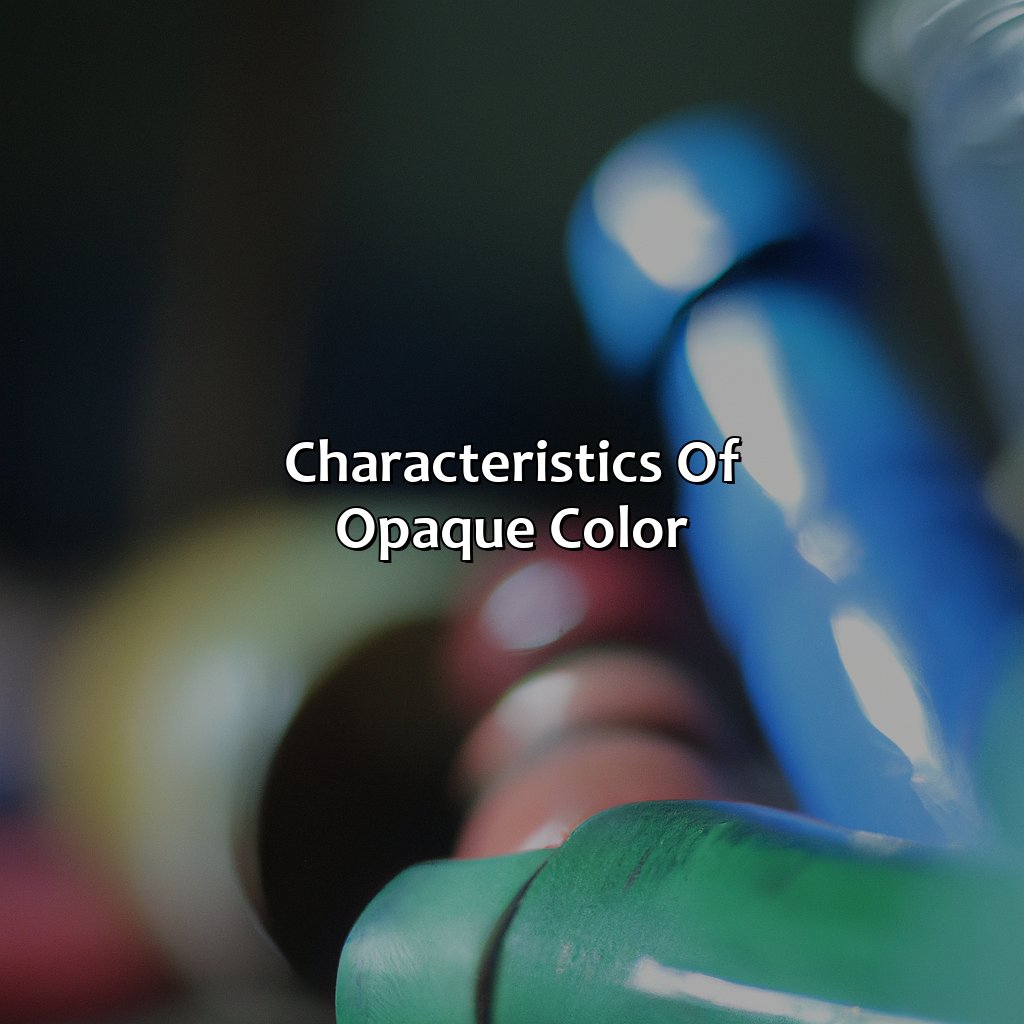
Photo Credits: colorscombo.com by Arthur Allen
Uncover the true essence of opaque color! Delve into the section on “Characteristics of Opaque Color”. Learn the benefits of High Coverage and Hide. Discover the unique Non-Translucent aspect. Explore the Bold, Rich, and Vibrant features. Enjoy their impressive qualities!
High Coverage and Hide
Opaque color is known for its high coverage and hide properties. It’s the ability to obscure or block out colors underneath it. This quality makes it ideal for artistic work, industrial applications, as well as cosmetic and personal care products.
- Opaque color has high coverage and hide properties that make it able to fully cover a surface without letting any light pass through. This leads to an intense and bold look, which is perfect for creating vibrant and dramatic pieces.
- Non-translucent nature is another characteristic of opaque colors that contributes to its high coverage and hide capabilities. By not allowing light to pass through the surface layer, opaque colors can effectively mask underlying layers.
Finally, opaque colors have a rich consistency that results in visual appeal. Its boldness and vibrancy bring out its unique characteristics that are impossible to miss.
Non-translucent colors: because sometimes you just don’t want to see what’s underneath.
Non-Translucent
Opaque color is not transparent and does not allow light to pass through. Its high opacity makes it suitable for covering up underlying colors and surfaces, creating a blockage effect. Non-translucent materials do not transmit light through them and thus cannot be seen through.
As opposed to translucent or semi-transparent materials, non-translucent materials are dense enough to prevent any kind of transparency. Opaque pigments do not allow light to pass through since they contain high amounts of white pigment along with their respective color shades.
Non-translucent colors provide excellent coverage over underlying paints or surfaces, especially in industrial applications like automotive paints, where durability and resistance to wear and tear are crucial factors. The thickness and density of opaque pigments give them their distinctive visual appeal, making it a popular choice in art, design, cosmetics, and personal care products.
It is important to note that unlike translucent pigments that allow the surface underneath them to show through when applied in thin layers, opaque pigments have a solid masking effect on the surface. The vibrant color shade of non-translucent colors intensifies with each coat added during the layering process.
To use non-translucent colors effectively in art or design projects, techniques like dry brushing can be used for refining fine details while layered painting produces complex compositions that incorporate tonal variations from fewer color options.
Overall, the characteristics of non-translucent opaque colors make them an essential component in several industries seeking vivid designs or blocking effects over an underlying finish. Looking for colors that scream look at me? Look no further than the bold, rich, and vibrant world of opaque colors.
Bold, Rich, and Vibrant
Color plays an essential role in various industries, from art and design to cosmetics and personal care products. One of the characteristics that artists and designers look for is the bold, rich, and vibrant presentation of color. Opaque colors are known for their high coverage and hide meaning that they can fully cover whatever surface or texture they are applied over.
Opaque colors are non-translucent, unlike transparent or semi-transparent colors. They offer a dramatic contrast and can make an instant impact in any composition. Moreover, their boldness adds depth, dimensionality and helps create texture in visual artwork.
Additionally, opaque colors can be applied onto different surfaces other than paper since they resist smudging when dry. This makes them more durable for industrial producers who prefer using this type of color.
Using opaque color effectively requires specific techniques such as:
- Layering, applying multiple coats evenly to build up saturation.
- Dry brushing, where you have less paint on the brush so that it just grazes over the surface’s peaks – this method allows for highlighting details subtly.
- Blocking/masking elements to use as a basing element or undercoat for additional layers of color application.
Experimenting with these techniques creatively will provide you with beautiful compositions featuring vibrant color schemes from bold modern abstracts to moody impressionist landscapes while also remaining durable over time. Get ready to dive into the colorful world of opaque paints with these three types: watercolors, acrylics, and oils.
Types of Opaque Colors
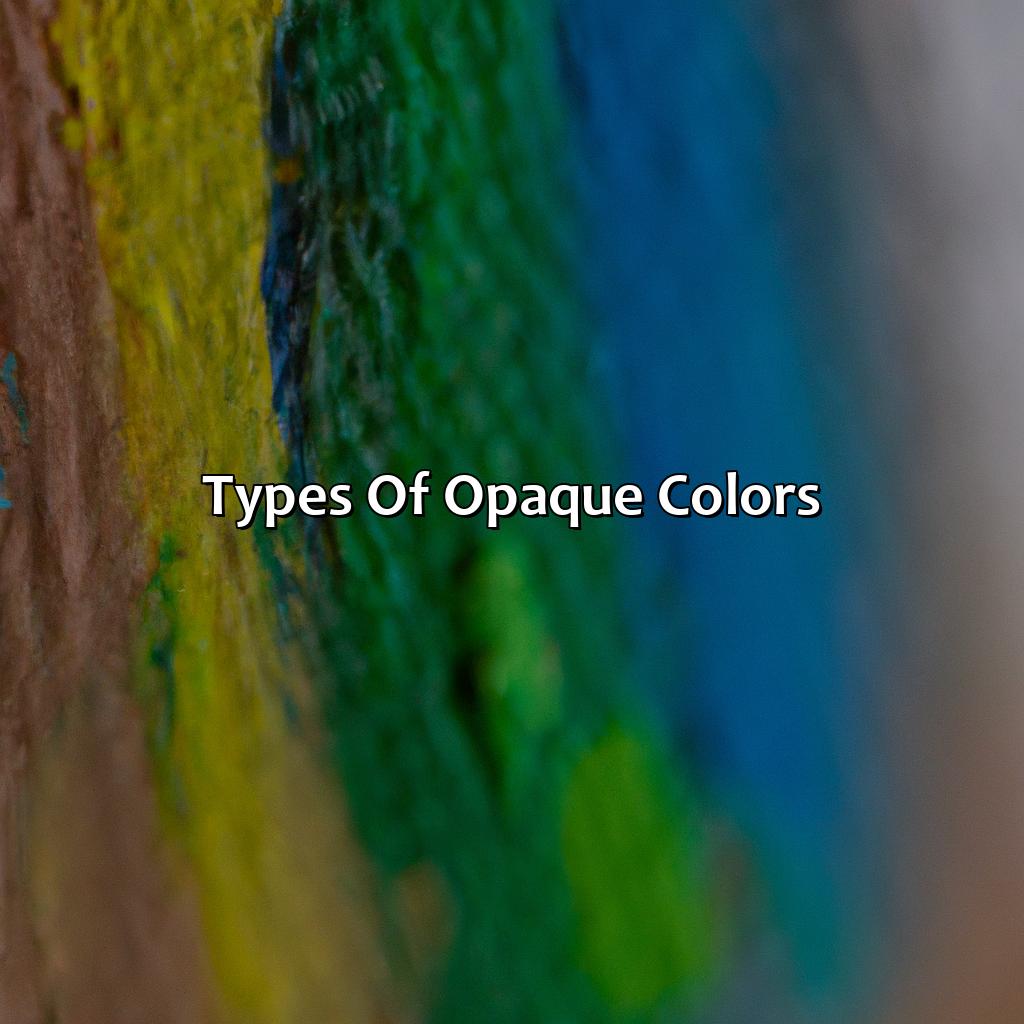
Photo Credits: colorscombo.com by Michael Hill
Fancy painting? Need to know about opaque colors? Let’s discuss!
Opaque watercolors, acrylic opaque paints, and oil paints all have different levels of opacity. So, pick the right opaque paint for your artwork! Look at opacity, texture, and lightfastness. That’ll help you get the ideal results.
Opaque Watercolors
Opaque watercolors contain a high concentration of pigment, making them highly opaque and non-translucent. They are known for their excellent coverage and hiding power, which helps add vibrancy to artwork. These types of watercolors have low mixing capabilities and are ideal for blocking out areas when layering other colors.
Artists use opaque watercolors in various styles of painting, including traditional Asian paintings, gouache techniques, or transparent watercolor effects mixed with white gouache. They are popular for artworks that require vivid colors that stand out, such as poster arts or illustrations.
Interestingly, opaque watercolors were first used in Japan during the 1500s when artists created a type of painting called “nihonga.”
Source: https://www.mooreart.org/what-are-opaque-watercolors/
Why be transparent when you can be bold and vibrant with acrylic opaque paints?
Acrylic Opaque Paints
- Acrylic Opaque Paints provide bold and vibrant colors for multiple surfaces such as canvas, paper, wood, metal, glass.
- The drying time of Acrylic Opaque Paints can be controlled by altering the medium used which enables glazing effects or thick application techniques.
- These paints are widely available in different forms such as tubes or jars depending on the amount required.
Additionally, Artists prefer Acrylic Opaque Paints for its versatility to mix with other paints such as oils, watercolors or pastels that allow them to experiment with new styles.
Opaque acrylics can transform the appearance of a surface from one color to another easily without ruining texture and are bloat-free.
As acrylic opaque paint demand surges across several industries big names like Winsor & Newton Professional Acrylic continues innovating and introducing acrylic paintings with higher opacity than regular ones.
Opaque oil paints: perfect for hiding your mistakes, just like your ex’s phone number.
Opaque Oil Paints
Oil paints are one of the popular types of opaque colors in the art industry. These paints contain pigments mixed with linseed or sunflower oil, making them slow-drying and thicker in consistency than watercolors.
Opaque oil paints provide excellent coverage and hide, making them perfect for creating dense and bold artwork. Opaque oil paints can be used on a variety of surfaces like canvas, wood, and metal, providing long-lasting color that resists fading. Mixing opaque oil colors can create an almost infinite range of shades and hues. Additionally, these paints dry slower than other types of paint which allows for more blending time, adding to their unique characteristics.
Unique details about opaque oil paints include being able to achieve intricate details through techniques like glazing or scumbling. Moreover, artists can add texture by using impasto techniques where thick layers of oil paint are applied.
Don’t miss out on the versatility and unique characteristics that opaque oil paints offer artists in various industries. Use them to add depth and dimension to your artwork today! From art to cosmetics, opaque colors have a versatile range of applications that pack a bold punch.
Applications of Opaque Colors

Photo Credits: colorscombo.com by Arthur Thomas
Investigate the uses of opaque colors! From artwork and design, to industrial use, to cosmetics and personal care products. Learn more about these colors and why they are favored compared to others. Delve into each of these subsections to gain insight!
Art and Design
Artistic and creative expression can be enriched by the use of opaque color. It is the go-to choice for artists and designers who seek bold, vibrant hues, high coverage, and opaque finishes to their creations.
In art and design, opaque colors offer many benefits. They allow creators to produce highly pigmented images on surfaces such as paper or canvas. Opaque colors are great for layering and mixing because they are non-translucent. The bold and rich nature of its hues grabs the viewer’s attention instantly, making a statement that cannot be ignored.
Unique details in art and design come with experienced use of creative techniques to play with its versatility. Whether it involves layering different colors, dry brushing techniques to create texture or bold blocking patterns – it can enhance the overall appeal of your artwork.
To better utilize these techniques when combining art and design with opaque color, it is essential to experiment and try various methods until you discover which technique brings out the best results in your work. Layering will give depth to your work while making it easier to blend different colors together smoothly; dry brushing will add texture and highlights to a piece while blocking out areas you want to stand out even more.
Overall, using opaque color in art and design provides great versatility in enhancing aesthetic appeal while providing excellent coverage across multiple surfaces- whether it be for wall murals or creating eye-catching marketing materials.
Opaque colors: making sure your product doesn’t come off as transparently unprofessional in the industrial world.
Industrial Applications
Opaque color finds its significance in numerous industrial applications, ranging from packaging to advertising needs. This versatile pigment caters to the diverse demands of industries and enhances their product qualitatively.
In Industrial Applications, opaque colors are extensively used for labeling, branding purposes, and printing on packaging materials like glass bottles, metal cans, plastic containers, and pouches. In the automotive industry, opaque shades are used for coating car parts to render them rust-proof and durable. Such colors also aid in coating electronic devices seamlessly. Additionally, opaque color paints are used in the manufacturing of toys as they are child-safe and vibrant.
| Packaging Industry | Branding & Labeling | Toys Manufacturing |
| Automotive Industry | Electronic Coating |
Moreover, opaque shades play a crucial role in promoting products on various digital platforms. For instance, cosmetics brands use opaque color schemes for their content creation as they create an impactful visual effect that highlights distinct features of makeup products like lipsticks and eyeshadows.
Pro Tip: While choosing an opaque shade for industrial purposes, it is advisable to consider pigments with high chroma levels that ensure better adhesion on surfaces.
Cover up your flaws with the power of opaque color – perfect for both cosmetics and personal care products.
Cosmetic and Personal Care Products
Opaque Color’s applications are not limited to the art and design industry. It is also used in the formulation of cosmetics and personal care products due to its ability to provide full coverage on the skin. Opaque colors, in combination with other ingredients, create cosmetic items such as foundations, concealers, eyeshadows, and mascaras. These are highly pigmented shades that offer bold and long-lasting color payoff suitable for any skin complexion.
Incorporating opaque colors has revolutionized the appearance of cosmetics and personal care products. The different variations of opaque colors create a range of finishes – matte, metallic or shimmery. This broadens product offerings while catering to different preferences within the market. Furthermore, opaque colors can be found in skincare products like sunscreen for their ability to block UV rays effectively.
It’s imperative that these coloring agents comply with necessary regulations based on ingredients and their sources before usage in cosmetic products. Additionally, they must have undergone rigorous testing for safety use on human skin.
The innovative mixture of cosmetics with opaque color helped revolutionize the beauty industry throughout history. For instance, Max Factor invented Pan-Cake makeup back in 1935 – a pancake-type foundation that was more portable than its liquid alternative.
Cosmetic companies continue to improve upon this combination exploring new possibilities in modern beauty trends like veganism-friendly products that comply with environmental sustainability guidelines making this pairing crucial for sustainable production practices within this niche sector. Unleash your artistic prowess with these opaque color techniques that will make your paintings pop like a toddler’s balloon.
Techniques for Using Opaque Color

Photo Credits: colorscombo.com by Juan Miller
Reinforce your painting skills with opaque colors! Techniques for Using Opaque Color is here to help. It’s broken down into three sections:
- ‘Layering and Building Up Color‘ to master layering and building up
- ‘Dry Brushing‘ for learning dry brushing techniques
- ‘Blocking and Masking Techniques‘ to explore blocking and masking
Layering and Building Up Color
Here’s a five-step guide to effectively Layering and Building Up Color:
- Choose your color palette based on the desired style and mood of your artwork or design.
- Start with a light base color that will serve as the foundation of your layering process.
- Using bold opaque colors, gradually add more layers, letting each coat dry completely before applying the next one.
- Continue layering until you reach your desired level of vibrancy and contrast.
- Once completed, assess your work by checking for any gaps or unevenness in coverage.
Furthermore, artists may add special techniques like glazing or scumbling to create specific textures and effects when layering opaque colors.
In creating art pieces, missing out on the crucial step of Layering and Building Up Color can compromise the final quality of work produced. Make sure to use this essential technique for achieving vibrancy and depth that stand out in artworks while making it more luxurious in designs.
Don’t miss out on creating visually impact-full works by not using Opaque Colors’ Layering and Building Up Color technique – it could be what sets your piece apart from others!
Make your painting look like a dried-up sponge with the stroke of a brush using dry brushing technique.
Dry Brushing
Using the dry brush technique involves using a mostly-dry brush with minimal paint to create a faint and subtle effect. By dragging the brush across the surface, you can create texture or emphasize existing details without smudging or blending colors. Using light pressure with the dry brush is essential for accurate application as it prevents any unwanted smears from occurring.
This method can be particularly useful when creating highlights or shadows, adding depth to artwork. Using this technique on paper gives an outdoor rough texture. It is necessary to note that this method should be used sparingly because too much of it might make the artwork look gritty and unrefined.
Historically, Dry Brushing has been used by artists from as early as the Renaissance period wherein stable water-mixable paints on paper were employed to help in portraiture painting techniques.
Block those bad colors and mask them away with these clever techniques.
Blocking and Masking Techniques
Professional artists commonly use advanced techniques to enhance the use of opaque color in their artwork. The process of intentionally blocking and masking certain areas involves complex layers, which allows the artist to create diverse gradients with contrasting effects based on a range of values.
Here’s a simple 4-step guide on how to block and mask using opaque colors:
- Apply a heavy layer of paint, normally black or another color that contrasts with the final paint color.
- Cut out the desired shape from a sheet of paper, place it on top, then scratch around its edges to make sure it is sealed onto the ground.
- Once all the papers are assembled, add more paint by dumping it over the papers and spilling it across them using a brush and letting them dry.
- Lastly, carefully remove all cut-out shapes revealing an impenetrable solid pigment–this acts as a powerful tool while working with opaque pigments.
It’s worthwhile noting that blocking and masking techniques are often time-intensive but worth the investment. A masterly produced piece will display various underlying techniques forming vast texture depths that blur into finishing details.
Try incorporating these techniques when you next work with opaque colors for interest-grabbing results.
Don’t miss out on creating captivating artworks filled with depth and texture – add sophistication to your skillset today!
Five Facts About Opaque Colors:
- ✅ Opaque colors are colors that block the light from passing through, unlike transparent or translucent colors. (Source: Craftsy)
- ✅ Opaque colors are known for their vibrancy and boldness, making them ideal for creating eye-catching designs and patterns. (Source: My Modern Met)
- ✅ Opaque colors are commonly used in broad applications, such as murals, signs, and printmaking. (Source: Fountain Studio)
- ✅ Opaque colors are often made from pigments, such as titanium dioxide, that can produce a range of colors when mixed with other pigments and mediums. (Source: Art is Fun)
- ✅ Opaque colors can be found in many mediums, such as acrylics, oil paints, gouache, and markers. (Source: Blick Art Materials)
FAQs about What Is Opaque Color
What is opaque color?
Opaque color is a type of color that is not transparent or translucent; it is impenetrable to light. This means that when light strikes an opaque object or surface, it doesn’t pass through it to the other side.
What are some examples of opaque colors?
Some examples of opaque colors include white, black, and all the colors in between. Other opaque colors include metallic shades like gold, silver, and bronze.
What is the difference between opaque and translucent color?
The main difference between opaque and translucent color is that opaque color is completely impenetrable to light, while translucent color allows some light to pass through it without being completely transparent.
Can you mix opaque colors with transparent colors?
Yes, you can mix opaque colors with transparent colors to create new shades and colors. The resulting color will depend on the ratio of opaque to transparent colors used in the mix.
How can I use opaque colors in my artwork?
Opaque colors are perfect for creating solid, bold designs and graphics. They are great for creating contrasting elements in your composition and can help create a focal point within your artwork.
What type of paint is opaque?
Acrylic paint is typically the go-to paint for artists looking to use opaque colors. Other types of paint such as oil and gouache can also be used to create opaque colors, but they require different techniques and methods compared to acrylic paint.

